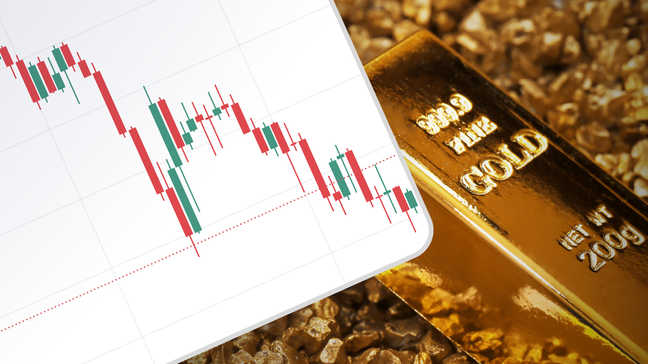Cautious optimism prevails in the market as traders await the all-important US Q4 GDP and European Central Bank (ECB) monetary policy meeting announcements. The recently firmer PMIs from the key global economies increased the importance of these events, especially when the Fed’s delayed rate cuts are widely accepted.
It’s worth noting, however, that the US Dollar fails to cheer the upbeat PMIs and hawkish Fed concerns amid fears of easing economic growth, as well as due to China-linked optimism. Further, doubts about the US Federal Reserve’s (Fed) next move and preparations for a hawkish outcome in next week’s FOMC also allowed the Greenback buyers to take a breather.
Amid these plays, EURUSD, GBPUSD and AUDUSD edge higher but the USDJPY fails to cheer USD pullback amid firmer yields. Further, USDCAD also remains pressured despite upbeat Oil prices as the Bank of Canada (BoC) failed to convince hawks.
That said, Gold price remains on the back foot after falling the most in a week to refresh the weekly low whereas Crude Oil buyers take a breather.
BTCUSD and ETHUSD lack clear directions but stay depressed as optimism surrounding the Spot ETF approvals fades amid the US SEC’s hard stand.
Following are the latest moves of the key assets:
- Brent oil edges higher at a two-week top, marked the previous day, up 0.45% intraday near $80.00 by the press time.
- Gold price remains depressed around $2,015, approaching key support line after the previous day’s heavy fall.
- USD Index fades the late Wednesday’s corrective bounce off a two-week low, mildly offered near 103.20 at the latest.
- Wall Street closed mixed and the Asia-Pacific stocks edged higher. That said, equities in the UK and Europe appear dicey during the initial hour.
- BTCUSD remains clueless near $40,000 while ETHUSD posts minor losses near a three-week low of $2,230 as we write.
Gold sellers ignore risk-on mood, Chinese measures…
January preliminary readings of the UK, Eurozone, and US PMIs were mostly upbeat and suggested a gradual improvement in the key global economic activities. This bolstered the market’s morale and pushed back fears of witnessing recession while favoring the US soft landing concerns. However, the risk-on mood gained more attention and weighed on the US Dollar despite firmer yields. Also important to note was the fact that the Federal Reserve (Fed) increased interest rates on the emergency bank landings, at least until March.
Apart from that, Houthis claimed to have directly hit the US military ship and escalated the geopolitical tensions. The same joined escalating concerns about the Federal Reserve’s (Fed) delayed rate hike and recently firmer US data favoring “soft landing” chatter to underpin the bullish bias about the US Dollar, which in turn tests the Gold buyers.
Elsewhere, the People’s Bank of China (PBoC) and the Chinese government took multiple measures to unleash more liquidity and push back fears of slower economic recovery, mainly to tame the recent stock rout. The same joined the overall risk-on mood, after the upbeat PMis, weighed on the US Dollar and put a floor under the Gold price.
That said, EURUSD also recovered from a six-week low to refresh the weekly top after upbeat EU data and a broad pullback in the US Dollar. However, the cautious mood ahead of today’s European Central Bank (ECB) Monetary Policy Meeting prod the Euro bulls of late. On the same line, GBPUSD also rose to the highest in two weeks after firmer UK PMIs even as the fears about British economic growth and the Bank of England (BoE) chatters triggered the Cable pullback afterward.
Further, Japan's top currency diplomat Masato Kanda praised ultra-loose monetary policy but also mentioned negative side-effects of the same while speaking early Thursday. The policymaker, however, declined to comment on the Bank of Japan’s (BoJ) exit from negative rates and allowed USDJPY to recover from a one-week low.
Moving on, the Bank of Canada (BoC) matched market forecasts while keeping the monetary policy intact. However, comments from BoC Governor Tiff Macklem pushed back recession concerns and showed rationale behind keeping the rates intact for a while, which in turn drowned the Canadian Dollar (CAD) despite firmer prices of Canada’s key export, namely the crude oil.
It should be noted that the higher-than-expected draw in the crude oil inventories and hopes of witnessing more energy demand due to the firmer PMIs joining the OPEC+ measures to curb production and the IEA’s upbeat demand forecast to propel the Oil prices.
- Strong buy: USDCAD, USDJPY
- Strong sell: Crude Oil, US Dollar, GBPUSD
- Buy: BTCUSD, ETHUSD, Nasdaq, Gold
- Sell: DAX, FTSE 100, BTCUSD, AUDUSD, EURUSD
US Q4 GDP Advance, Durable Goods Orders and ECB eyed…
Moving forward, a likely softening of the US Q4 GDP and Durable Goods Orders for December might allow the Gold price to rebound from the stated trend line support. However, the ECB needs to defend its hawkish bias, despite keeping the monetary policy intact, and the firmer sentiment should prevail for that to happen. That said, the XAUUSD is likely to extend the bearish consolidation mode within a short-term descending trend channel unless the scheduled data/events surprise the market which is least expected.
May the trading luck be with you!




